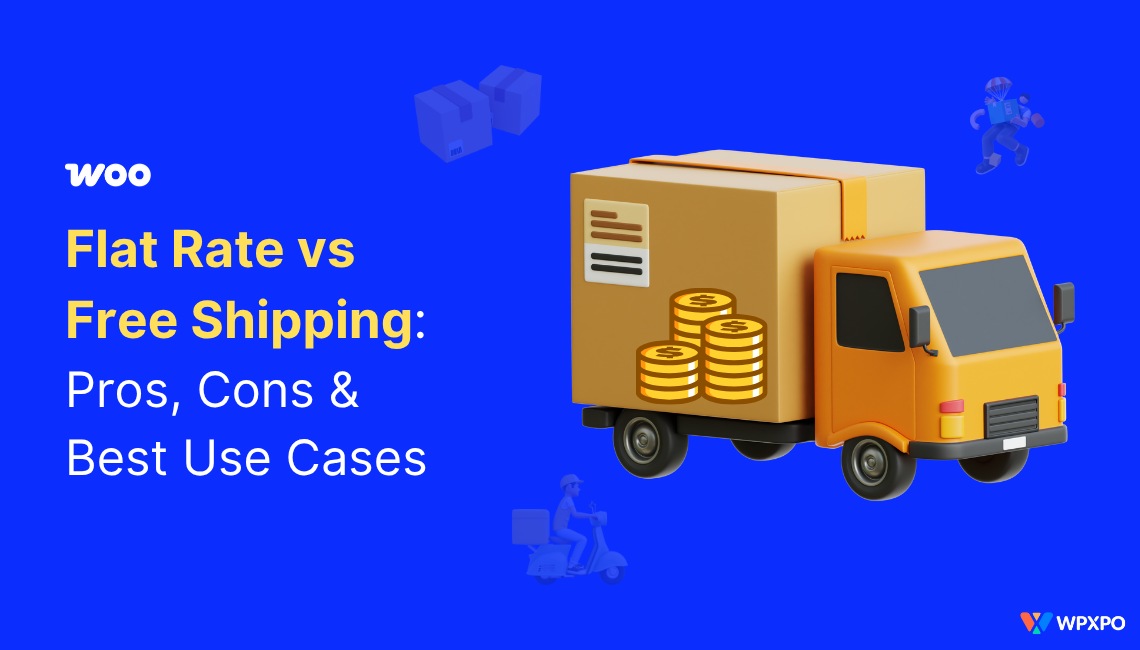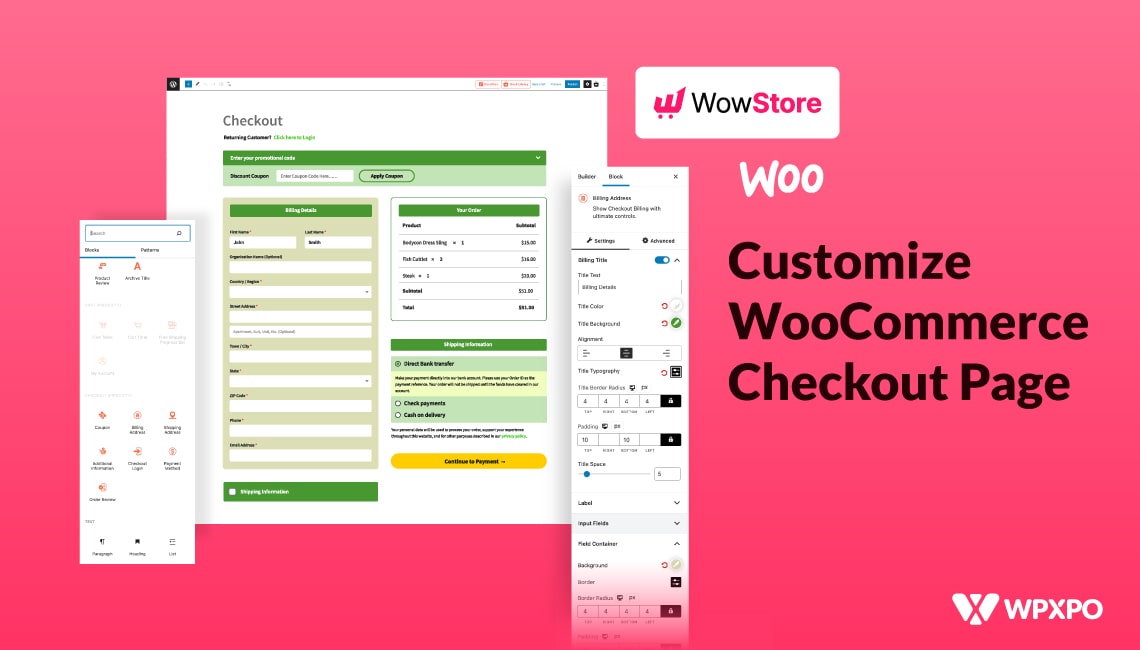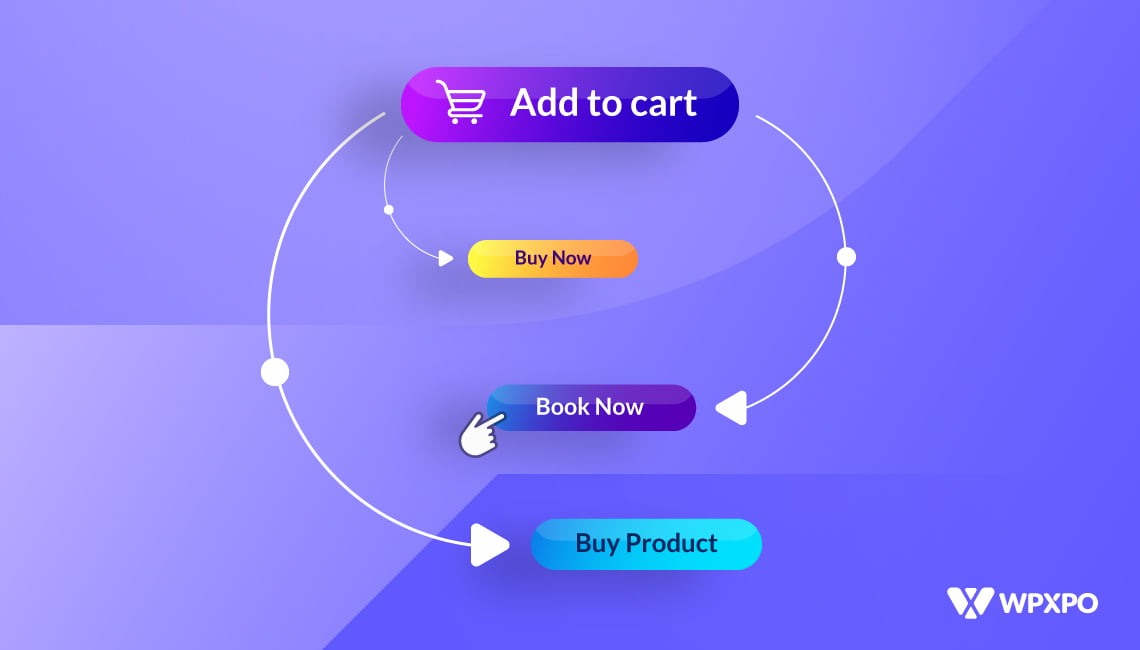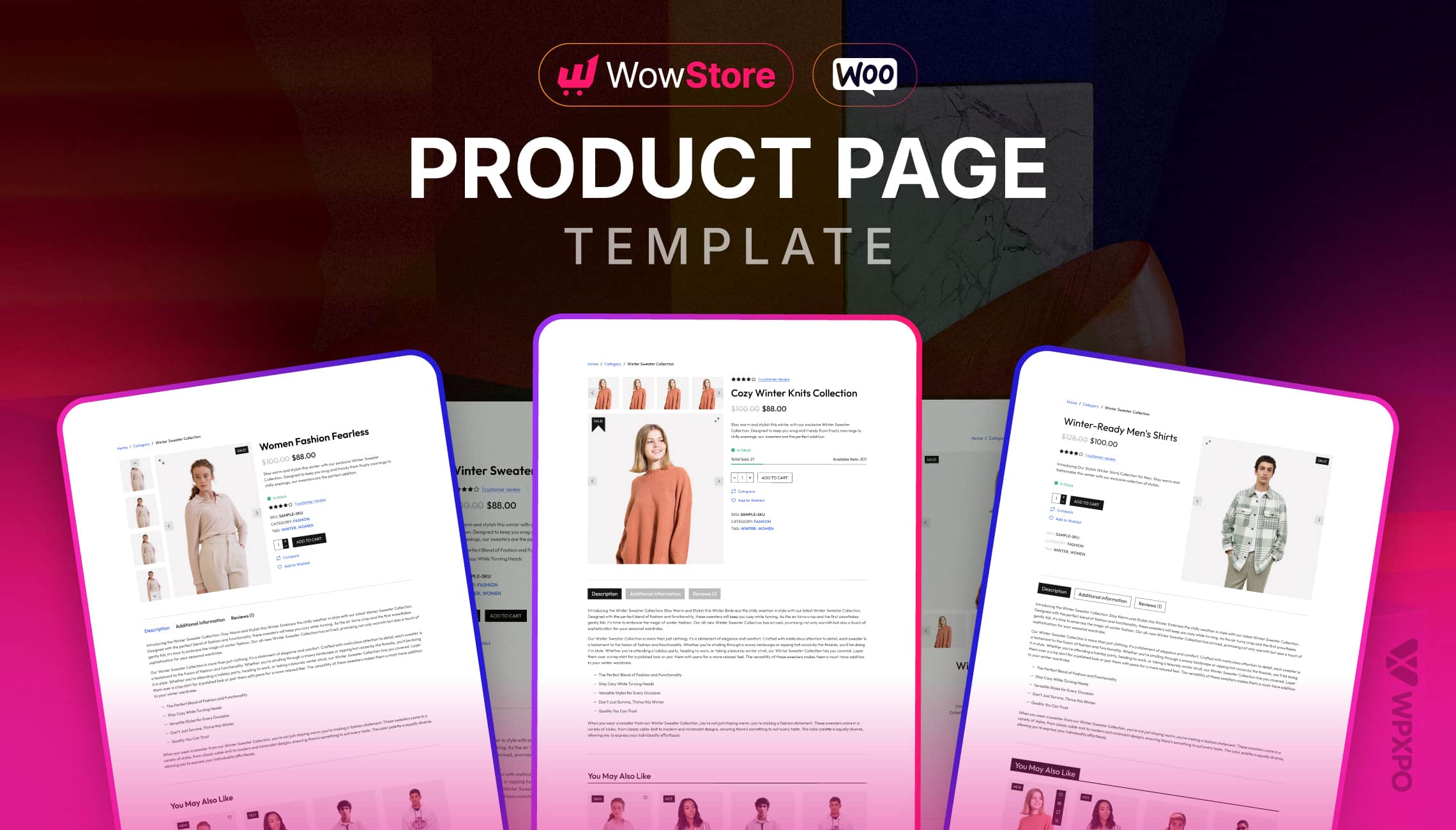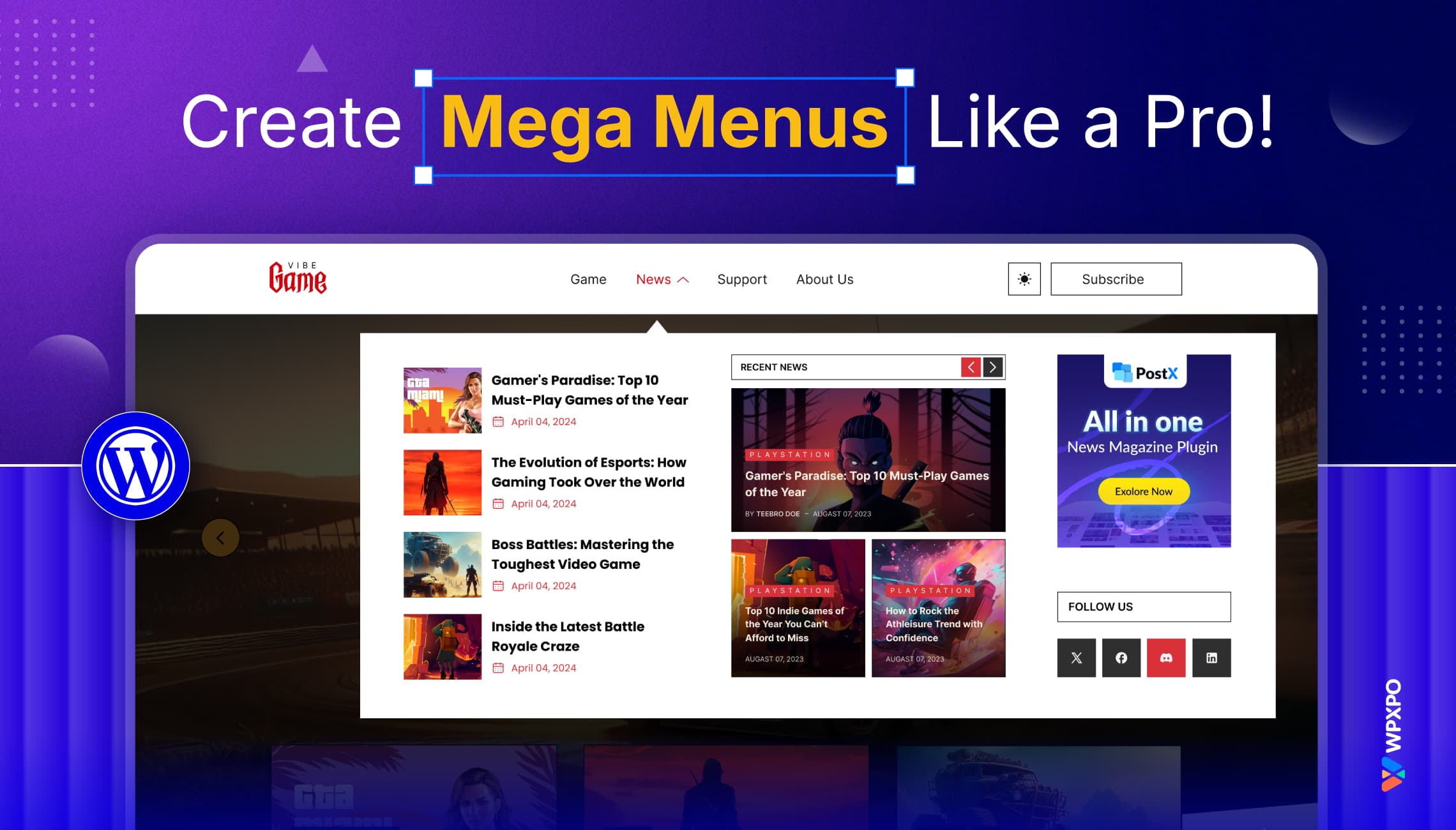Shipping can make or break your WooCommerce store. It affects pricing, profits, and how customers perceive your brand. And with 58% of merchants saying the cost of shipping is their biggest challenge, choosing the right shipping method isn’t just a setup task—it’s a strategic decision.
Should you go with a flat rate for simplicity and stability? Or offer free shipping to boost conversions? Each has its own benefits and its own trade-offs. Picking the wrong one could mean lost sales or shrinking margins.
🚚 Here’s what you’ll discover in this guide:
- What flat rate and free shipping actually mean in WooCommerce (with real examples)
- The key differences that affect profits, customer loyalty, and growth
- Pros and cons of both methods—short, clear, and to the point
- Use-case-based recommendations for new, growing, and established stores
- Scenarios where combining both makes sense (and when it doesn’t)
Whether you’re just launching your store or rethinking your shipping setup, this guide will help you make an informed decision. You might even uncover a few strategies you hadn’t considered yet, like using both methods together to balance cost and conversion.
Let’s unpack the real difference and find out what’s right for your store.
What Is Flat Rate Shipping in WooCommerce?
Flat rate shipping in WooCommerce is a simple, fixed-cost shipping method where customers pay the same shipping fee, regardless of product weight, size, or order total.
You decide the amount, and WooCommerce applies it per order, per item, or per shipping class—depending on how you set it up.
It’s popular because of its predictability. Whether someone buys one product or five, the shipping cost stays the same (unless you configure it otherwise). This makes it easier to manage costs and set expectations with customers.
Now, let’s break down how it actually works.
How does it work?
Flat rate shipping is managed inside WooCommerce > Settings > Shipping under specific shipping zones. You can assign one or multiple flat rate options based on location.
Here’s how it works behind the scenes:
- Zone-Based: Create a shipping zone and apply the flat rate method to it.
- Charge Type: You can charge:
- A fixed cost per order (e.g., $5 no matter what)
- A cost per shipping class (e.g., different rates for light vs bulky products)
- Custom Labels: You can rename the shipping method so it looks more user-friendly at checkout.
- Advanced Cost Calculation (Optional): With short formulas like 10 + (2 * [qty]), you can add dynamic pricing, though this is still within flat rate rules.
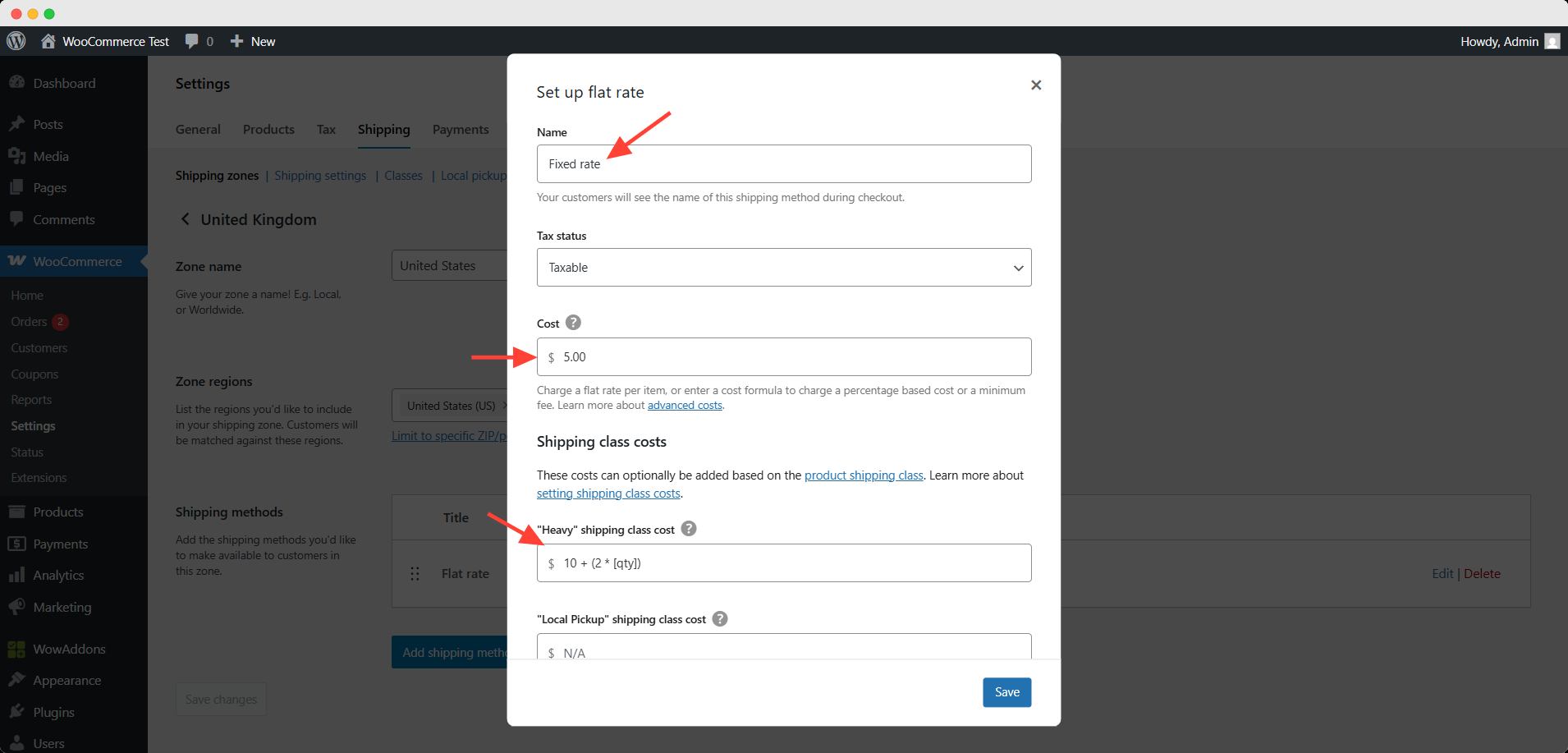
The beauty of flat rate shipping is that once it’s set up, it runs on autopilot. You don’t have to worry about weight-based calculations or external carrier integrations—just a straightforward fee structure that keeps operations simple.
Want to know about WooCommerce shipping setup? Check out this blog 👇
How to Set Up Shipping in WooCommerce (Step-by-Step Guide)
What is Free Shipping in WooCommerce?
Free shipping means your customers pay nothing extra for delivery. The shipping cost is covered by you, the store owner, or built into the product price.
In WooCommerce, free shipping is a built-in option. You can offer it conditionally or unconditionally. It’s often used as a marketing tool to boost sales or encourage higher order values.
Customers love seeing Free Shipping at checkout. It reduces hesitation and increases conversions.
How does it work?
Like flat rate, free shipping is added to a shipping zone under WooCommerce → Settings → Shipping.
But here’s the difference—you can set conditions for when free shipping applies.
Here are the common options:
- Unconditional Free Shipping: Free for all orders in a specific zone.
- Minimum Order Amount: Customers must spend a certain amount to unlock free shipping.
- Coupon Requirement: Customers apply a free shipping coupon at checkout.
- Combined Conditions: Use both minimum spend and coupon together.
You can also rename the method to match your brand voice.
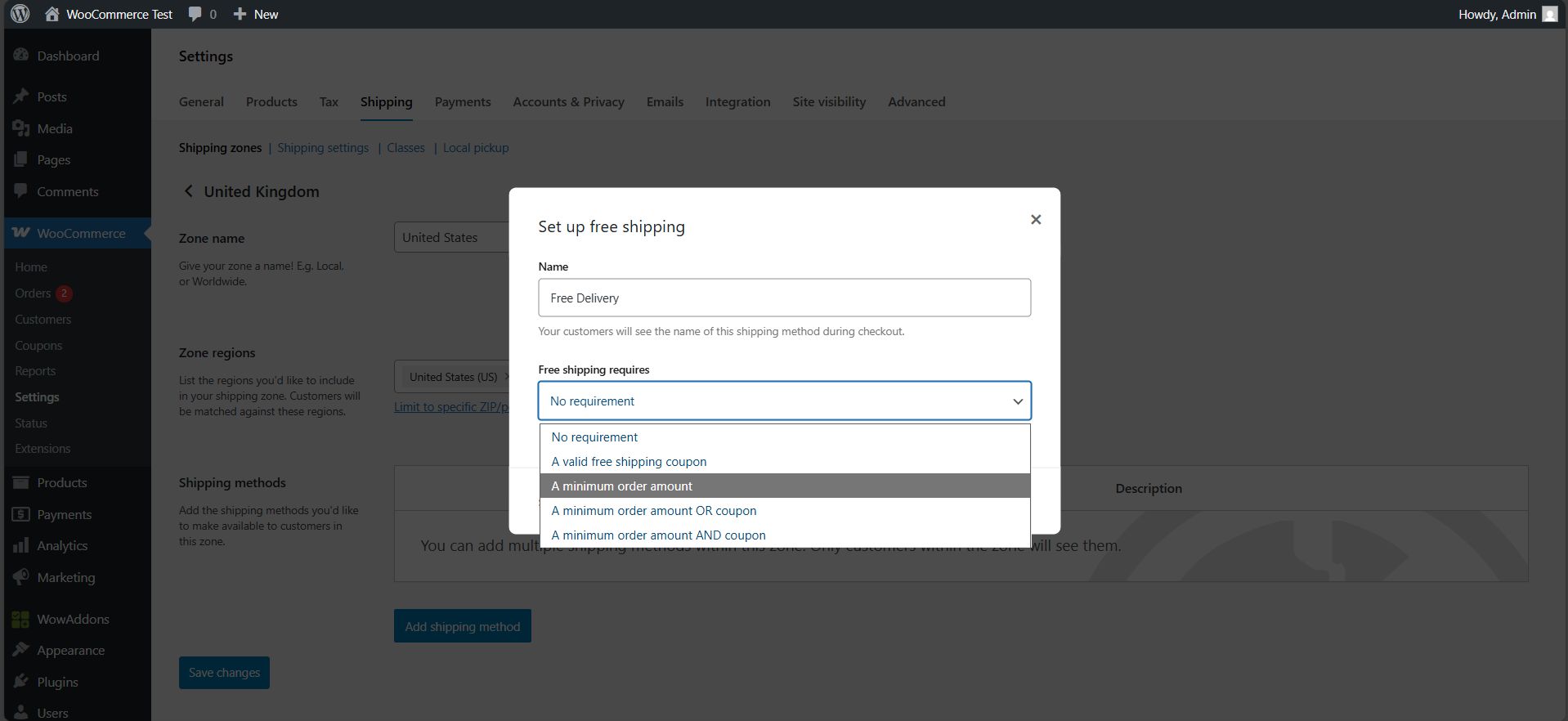
Free shipping doesn’t mean free for you, but it’s often worth the cost. It’s one of the easiest ways to increase customer satisfaction and boost your conversion rate.
Flat Rate vs Free Shipping in WooCommerce: Key Differences
Choosing between flat rate and free shipping isn’t just about cost. Each method affects your store’s pricing, customer experience, and long-term strategy in different ways.
Flat rate gives you control. You always know how much you’re charging and can plan your profit margins around it. But it may not excite customers the way free shipping does.
Free shipping, on the other hand, is a conversion booster. Shoppers love it. It can lead to more sales, but only if you can afford the margin hit or build the cost into your products.
It really comes down to your business goal. Do you want a predictable income per order? Or do you want to maximize cart size and reduce friction?
To help you decide, here’s a side-by-side comparison of both methods based on key criteria:
| Criteria | Free Shipping | Flat Rate Shipping |
|---|---|---|
| Cost Control | ❌ Low | ✅ High |
| Conversion Impact | ✅ High | ❌ Moderate |
| Customer Perception | ✅ Attractive | ❌ Standard |
| Marketing & Promotion Appeal | ✅ Excellent | ❌ Weak |
| Setup Complexity | ❌ Slightly Conditional | ✅ Easy |
| Profit Margin Predictability | ❌ Risky | ✅ Strong |
| AOV (Average Order Value) Strategy | ✅ Strong | ❌ Neutral |
| Operational Simplicity | ❌ Complex | ✅ Simple |
| Customer Loyalty & Retention | ✅ High | ✅ Moderate |
| Cost Efficiency & Scaling | ❌ Limited | ✅ High |
| Flexibility for Region or Product-Based Pricing | ✅ Possible | ✅ Possible |
Once you understand these differences, the next step is figuring out which method makes sense based on your store’s current stage and growth goals.
Pros & Cons of Flat Rate Shipping
Flat rate shipping is simple and consistent. But it’s not ideal for every type of store. Here are the pros and cons to help you understand its strengths and limitations:
Pros of Flat Rate Shipping
- Predictable Costs – You always know how much you’re charging per order or item.
- Easy to Set Up – No need for weight or dimension rules.
- Works Well with Fixed Products – Great for stores selling similar-sized or priced items.
- Stable Margins – Easier to calculate and protect your profit per order.
- Scales Easily – One setup works for multiple products and regions.
- Customer Clarity – Customers see consistent shipping fees at checkout.
Cons of Flat Rate Shipping
- Not Always Competitive – Customers may leave if they find cheaper or free shipping elsewhere.
- Can Discourage Small Orders – A $10 fee on a $5 product feels unreasonable.
- Low Conversion Boost – Unlike free shipping, it doesn’t attract impulse buyers.
- Lacks Flexibility – Same rate applies across the board unless you add shipping classes.
- Manual Adjustments Needed – You may need to change rates as shipping costs rise.
Pros & Cons of Free Shipping
Free shipping is a favorite among customers and is often seen as a competitive advantage. But behind the scenes, it requires careful planning to make it work for your business.
Pros of Free Shipping
- A proven way to reduce cart abandonment and boost overall conversion rates.
- Makes marketing promotions more appealing with Free Shipping as a strong call to action.
- Encourages customers to spend more, especially when paired with minimum order thresholds.
- Creates a sense of added value and trust, which helps build long-term loyalty.
- Ideal for lightweight or high-margin products where shipping costs can be absorbed.
Cons of Free Shipping
- May lead to lower profit margins if not priced into the product or covered elsewhere.
- Doesn’t work well for heavy, bulky, or low-cost items with tight margins.
- It can be tricky to set up if you want to offer it conditionally (like based on location or order value).
- Scaling across multiple regions or product types may require complex logic.
- Customers might get used to it, making it harder to reintroduce paid shipping later.
Want to make shipping effortless in your WooCommerce store?
Use WowShipping — the smarter way to set accurate rates and keep customers moving through checkout.
When shipping feels this easy, more visitors turn into buyers.
Best Use Cases: When to Use Flat Rate vs Free Shipping
There’s no one-size-fits-all answer when it comes to shipping strategy. The best option depends on your business goals, stage, and customer expectations. Let’s break it down based on three common types of WooCommerce store owners.
1. New Store Owners Focused on Gaining Customers
👉 Recommended: Free Shipping
If you’re just starting out and your main goal is to attract new customers, free shipping is the clear winner. It lowers the barrier to purchase and makes your offer more appealing, especially when you’re still building trust.
New customers are price-sensitive. Seeing Free Shipping at checkout feels like a bonus and can give you an edge over competitors.

Why Not Flat Rate❓
Flat rate may turn new shoppers away, especially if the product is low-cost and the shipping fee feels overpriced. At this stage, conversion matters more than margin.
2. Growing Stores Balancing Profit and Customer Growth
👉 Recommended: A Smart Mix — Free Shipping with Conditions
For growing stores, the sweet spot is usually conditional free shipping. Set a minimum order amount (like $50) to unlock free shipping. This boosts average order value while still offering an attractive perk.
It lets you win over price-sensitive shoppers and protect your margins at the same time.
Why Not Flat Rate Alone❓
While flat rate offers predictability, it doesn’t actively encourage larger orders. Plus, it lacks the promotional power that free shipping brings. If used without conditions, it may not drive the growth you’re aiming for.
3. Established Stores Focused on Profit and Efficiency
👉 Recommended: Flat Rate Shipping
If your store is well-established and you care more about protecting profit margins than aggressively growing your customer base, a flat rate is a solid choice. It’s reliable, scalable, and gives you full control over shipping costs.
You can also tailor flat rates by zone or shipping class to align with your product types or locations.
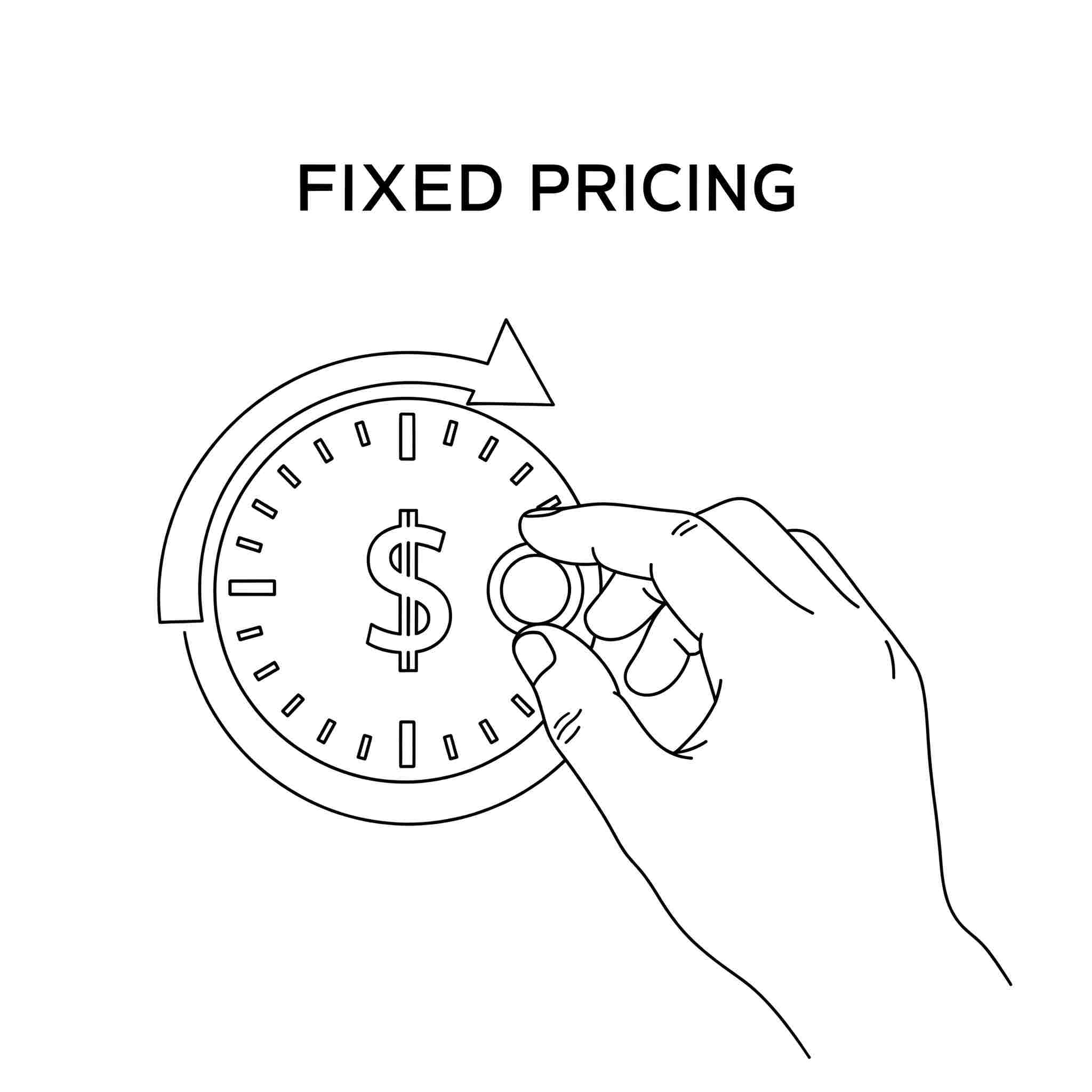
Why Not Free Shipping❓
Free shipping can start eating into profits fast, especially if you deal with heavier or lower-margin items. Unless your pricing strategy already accounts for shipping costs, it may hurt your bottom line more than it helps.
Add multiple classes easily in the WooCommerce shipping setup. Here’s how: How to Add Multiple Shipping Classes in Woocommerce (Step-by-Step)
Can You Use Both Flat Rate and Free Shipping Together?
Yes, WooCommerce allows you to use both flat rate and free shipping together in the same store, zone, or even for the same product type. But the key is how you structure the logic behind it.
When used wisely, this combo can give you flexibility and control. But if set up without a strategy, it can confuse customers or hurt your profits.
✅ When Using Both Works Well
Let’s say you run an online store that sells both small accessories and larger electronic items.
You could set it up like this:
- Free Shipping for orders over $75
- Flat Rate of $7 for all orders under $75
This creates a smart balance. Small orders still contribute to shipping costs, and larger orders are rewarded. Customers are motivated to add more to their cart, and your margins are protected.
You can even combine this with shipping zones:
- Flat rate for international orders
- Free shipping only within your domestic region
➡️ Why It Works: It encourages upsells, protects against shipping losses, and keeps your offer competitive—all without being confusing.
❌ When It Can Backfire
Now, imagine you offer both free shipping and flat rate for the same order without any condition, and both show up at checkout.
Customers may see:
- Free Shipping – $0
- Flat Rate – $5
Guess what happens? They’re confused. Why would anyone choose the flat rate? And worse, some might wonder if the free shipping is legit, or assume there’s a catch.
Even worse: if free shipping kicks in automatically but you’re still charging a flat rate in the backend due to misconfiguration, you might lose money on every order.
➡️ Why It Hurts: Misusing both together can lead to a poor checkout experience, erode trust, and cut into your margins without delivering value.
Used with intention, combining flat rate and free shipping can support both growth and profitability. Just make sure your conditions are clear—and your logic, airtight.
Find out the best plugins for WooCommerce Shipping 👈
How to Decide: Which One Is Right for Your Store?
Choosing between flat rate and free shipping isn’t just about picking what sounds better. It’s about aligning your shipping strategy with your store’s goals, products, and audience.
Here’s how to make the right call:
👉 Ask Yourself These Questions
- Are you trying to attract new customers quickly?
- Do your products have enough margin to cover shipping?
- Are you looking for simplicity and control over shipping costs?
- Do you want to boost average order value with strategic offers?
- Is your customer base price-sensitive, or focused more on trust and consistency?
Your answers will guide your strategy.
📌 If You Prioritize Conversions and Growth
Go with Free Shipping. It reduces friction and helps you compete, especially in saturated markets. Ideal for new stores, lightweight products, or when running promotional campaigns.
📌 If You Want Predictability and Profit Control
Choose Flat Rate Shipping. It’s easy to manage and scales well. Great for stores with consistent product types, heavier items, or limited margins.
⚖️ When to Combine Both
Use Free Shipping with Conditions (like minimum order value) and offer Flat Rate as a fallback. This gives your customers a choice while protecting your bottom line.
In the end, the best shipping method is the one that supports your business model and keeps your customers happy. You don’t have to commit to just one—test what works, adjust based on results, and stay flexible.
Frequently Asked Questions
Can I offer free shipping for specific products only?
Yes, you can. In WooCommerce, you can assign a free shipping method to a specific shipping class, and then apply that class to the products you want to ship for free. Alternatively, you can use plugins to create more advanced rules, like offering free shipping on select products or categories only.
How do I set different flat rates by location?
To set different flat rates by location, create multiple shipping zones under WooCommerce → Settings → Shipping, and assign a unique flat rate to each zone. For example, you can charge $5 for domestic orders and $15 for international ones. Each zone is matched based on the customer’s address at checkout.
Will free shipping reduce my profits?
It can—if you’re not careful. Free shipping cuts into your margins unless you build the cost into your product price or use it conditionally. That’s why it’s best used strategically to boost average order value or as a promotional tool.
What’s better for international orders?
Flat rate is usually better for international orders. It gives you more control over costs and avoids surprises from variable carrier rates. Free shipping for international customers can get expensive fast unless it’s limited to high-value orders or select regions.
Conclusion
Flat rate and free shipping are two of the most widely used shipping methods in WooCommerce, each with its own advantages.
Throughout this guide, we’ve explored how flat rate offers predictability and control, while free shipping drives conversions and customer satisfaction. Choosing the right one depends on your business stage, goals, product margins, and target audience.
If you’re just starting out and want fast traction, free shipping can help you stand out. If you’re scaling and watching your margins, a flat rate gives you stability. And if you’re somewhere in between? A smart combination of both may give you the best of both worlds.
Test, analyze, and adjust—because the best shipping strategy is the one that works for your store.
Stay updated with the latest news, trends, and upcoming events through our newsletter.

